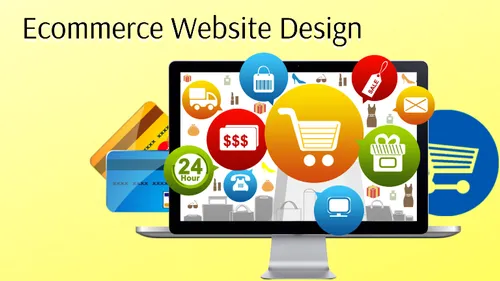In the ever-evolving digital landscape, a well-developed website is not just a business necessity; it is a powerful tool for driving sales. Whether you run a small local business or a large online retailer, implementing the right website development practices can significantly enhance user experience, increase conversion rates, and ultimately boost sales. Here are some best practices for website development that can help your business thrive.

Table of Contents
Toggle1. Prioritize User Experience (UX)
Creating an intuitive and enjoyable user experience should be the cornerstone of your website development strategy. Here’s how to achieve that:
- Easy Navigation: Ensure your website is easy to navigate. Use a clean layout with clearly labeled menus and categories to help users find what they’re looking for quickly.
- Responsive Design: With more consumers shopping on mobile devices, a responsive design that adapts to various screen sizes is crucial. Ensure your website provides a seamless experience on desktops, tablets, and smartphones.
2. Optimize Page Load Speed
Slow-loading websites can frustrate users and lead to higher bounce rates, ultimately impacting sales. Optimize your website’s performance by:
- Compressing Images: Use tools to reduce image file sizes without sacrificing quality, improving load times.
- Minimizing HTTP Requests: Limit the number of elements on each page, such as images, scripts, and stylesheets, to reduce loading times.
- Using Caching Techniques: Implement caching solutions to store frequently accessed data, allowing pages to load faster for returning visitors.
3. Implement Clear Calls-to-Action (CTAs)
Effective calls-to-action (CTAs) guide users toward desired actions, such as making a purchase, signing up for a newsletter, or requesting more information. To optimize your CTAs:
- Be Specific: Use clear and direct language in your CTAs. Instead of “Click Here,” use phrases like “Get Your Free Quote” or “Shop Now.”
- Make Them Stand Out: Use contrasting colors and larger font sizes to ensure your CTAs catch the user’s attention without being intrusive.
4. Use High-Quality Visuals
High-quality visuals, including images and videos, can significantly enhance the user experience and boost sales. Here’s how to effectively incorporate visuals:
- Professional Product Images: Use high-resolution images that showcase your products from multiple angles. Consider adding zoom functionality to allow users to examine details.
- Engaging Videos: Product demonstration videos can help potential buyers understand the benefits of your offerings, making them more likely to complete a purchase.
5. Incorporate Trust Signals
Building trust with potential customers is crucial for driving sales. Incorporate elements that enhance your website’s credibility:
- Customer Reviews and Testimonials: Showcase positive feedback from previous customers to build trust and encourage new users to make a purchase.
- Secure Payment Options: Display security badges and offer trusted payment methods to reassure users that their transactions are safe.
6. Optimize for Search Engines (SEO)
To attract organic traffic and increase visibility, optimizing your website for search engines is essential. Key SEO practices include:
- Keyword Research: Identify relevant keywords related to your products or services and integrate them into your website content, including titles, descriptions, and headings.
- Meta Tags: Optimize meta titles and descriptions to improve click-through rates from search engine results pages (SERPs).
- Regular Content Updates: Create and maintain a blog or resource section to provide valuable content, helping to improve your site’s authority and search rankings.
7. Simplify the Checkout Process
A complicated checkout process can lead to cart abandonment. Streamline your checkout experience by:
- Reducing Steps: Minimize the number of steps required to complete a purchase. Aim for a one-page checkout where possible.
- Guest Checkout Options: Allow customers to make purchases without creating an account, making the process faster and more convenient.
- Transparent Shipping Costs: Clearly display shipping costs early in the checkout process to prevent surprises that may deter users from completing their orders.
8. Utilize Analytics and A/B Testing
To continuously improve your website and boost sales, leverage analytics and testing tools:
- Monitor User Behavior: Use tools like Google Analytics to track user behavior, identify bottlenecks, and understand which pages are performing well or need improvement.
- Conduct A/B Testing: Experiment with different versions of web pages, CTAs, and layouts to determine which elements drive higher conversions. Use the insights gained to optimize your website further.
9. Focus on Content Marketing
Engaging and informative content can attract visitors to your website and guide them through the sales funnel. Consider the following strategies:
- Blogging: Create valuable blog content related to your industry, addressing common questions or problems. This can help establish your authority and attract potential customers.
- Email Marketing: Use targeted email campaigns to promote products, share updates, or offer exclusive discounts, keeping your brand top-of-mind for customers.
10. Ensure Ongoing Maintenance and Updates
A well-maintained website is essential for optimal performance and security. Regularly review and update your site to:
- Fix Broken Links: Regularly check for and fix broken links that can negatively impact user experience and SEO.
- Update Content: Keep your content fresh and relevant, updating product descriptions, prices, and blog posts as needed.
- Security Measures: Implement security updates to protect your website from vulnerabilities and ensure customer data is safe.
Conclusion
Boosting sales through effective website development requires a strategic approach focused on user experience, optimization, and trust-building. By prioritizing best practices such as clear navigation, fast loading speeds, effective CTAs, and ongoing maintenance, you can create a website that not only attracts visitors but also converts them into loyal customers. Embrace these best practices to enhance your online presence and drive sales growth for your business!


No responses yet